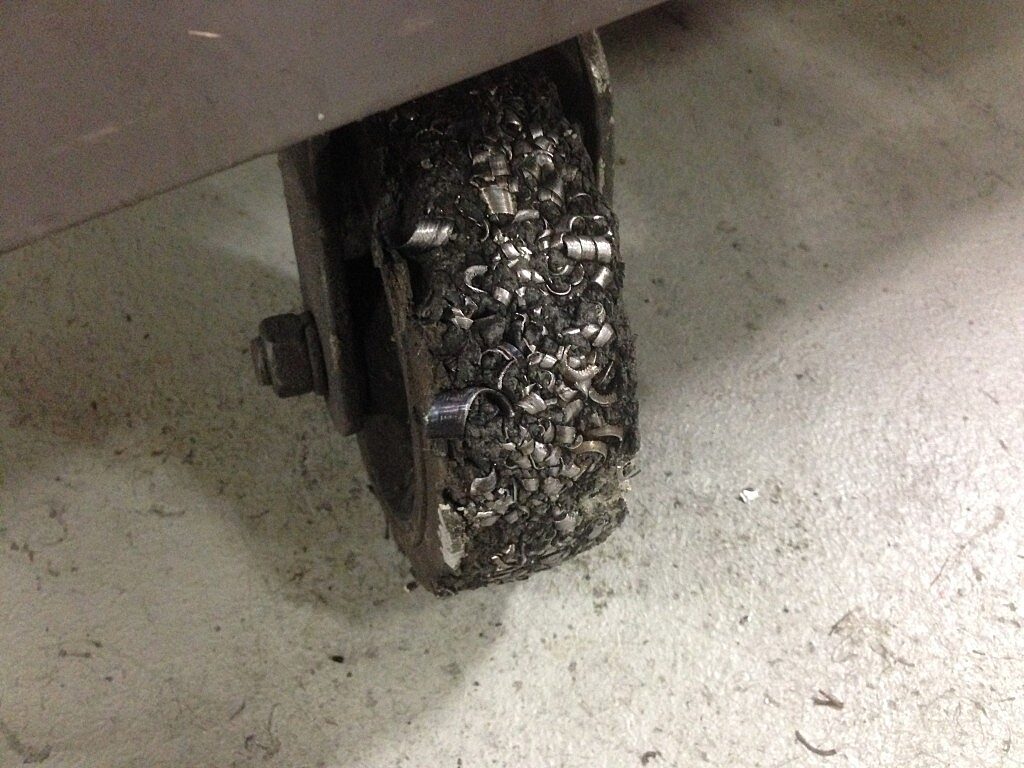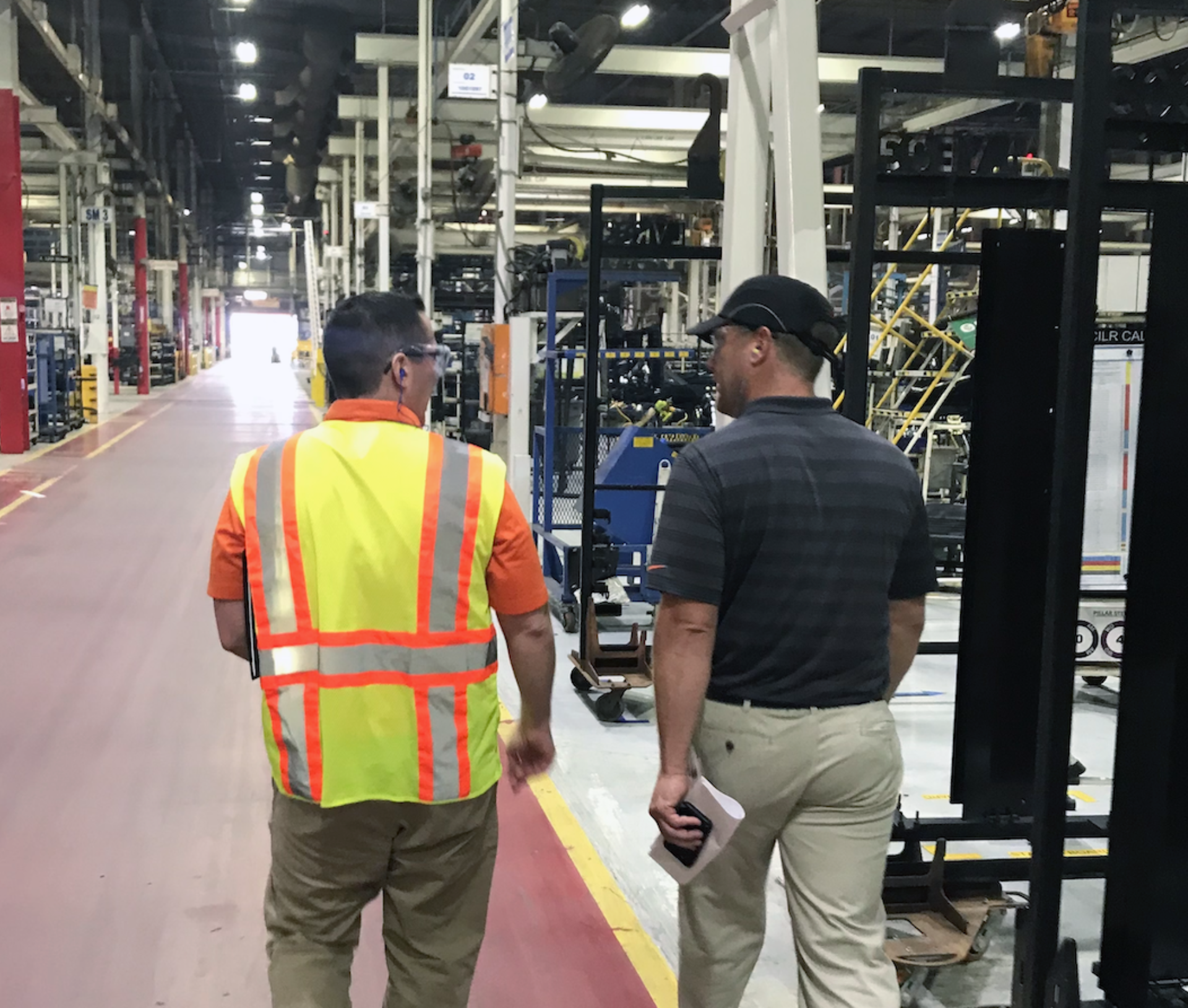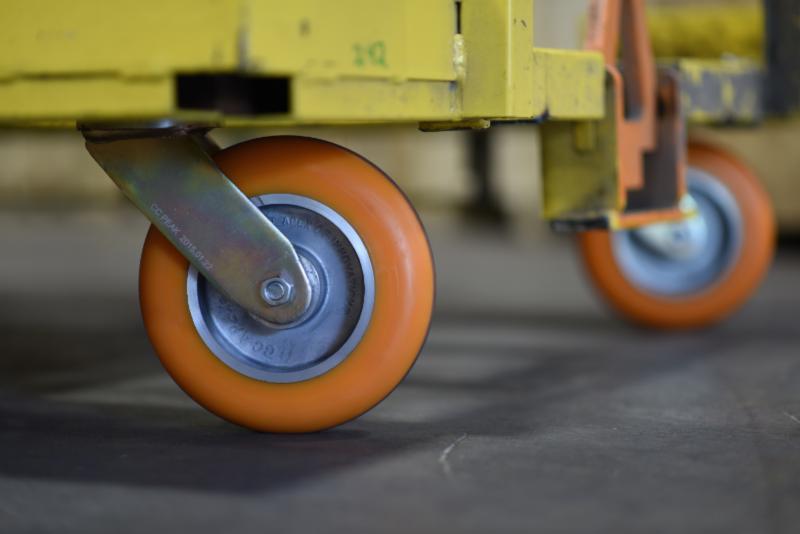Why Casters Wear Out and How to Reduce Replacement Costs

Casters are built to keep your operation in motion, but like any mechanical component, they’re subject to wear. Over time, even the most durable caster can start to break down—causing equipment issues, safety risks, and unexpected downtime.

The good news is that most caster wear is preventable. With the right setup and some simple preventative strategies, you can extend caster life, improve safety, and reduce costly replacements. Let’s take a closer look at what causes caster wear and what you can do to avoid it.
What Causes Wear and Tear?
Caster wear is inevitable, but it's rarely random. In most cases, wear and failure can be traced back to a few common causes. The good news is that many of these issues are preventable with the right setup and care. Understanding what leads to wear is the first step toward extending caster life, improving safety, and avoiding unnecessary replacements.
Overloading Beyond Capacity
One of the most common causes of early caster failure is loading beyond the rated capacity. Excessive weight compresses the tread, puts stress on the bearings, and can bend or distort the rig.
Prevention Tip: Add the weight of your equipment to the maximum load it will carry, then divide that total by the number of casters minus one. This gives you the minimum load rating each caster should support, with a built-in safety margin to prevent overload.

Poor Floor Conditions
Cracked floors, debris, or uneven surfaces put constant impact pressure on casters. This can lead to premature wear, delamination, or even structural failure—especially if the caster wasn’t designed for rough environments.
Prevention Tip: Select wheels suited to your floor type and keep work areas clean. Polyurethane wheels, for example, are ideal for mixed or uneven surfaces.

Incorrect Wheel Hardness
Not all wheel materials perform the same across different floor types. Using hard wheels on soft floors can cause gouging, while soft wheels on abrasive surfaces wear down quickly.
Prevention Tip: Match your wheel material and durometer to the flooring and application. Caster Connection can help you select the right combination based on your environment.

Improper Mounting or Configuration
When casters are mounted unevenly or misaligned, it leads to irregular wear and stress. Swivel casters may fail to rotate correctly, and rig misalignment can lead to poor tracking and excess vibration.
Prevention Tip: Ensure all casters are mounted securely, at equal heights, and in configurations designed for the equipment’s intended movement pattern.

Lack of Maintenance
Small issues often go unnoticed until they cause a complete failure. Dirt buildup, worn bearings, and missing components all contribute to unnecessary breakdowns.
Prevention Tip: Build caster checks into your maintenance schedule. Clean swivel sections, inspect wheel treads, and lubricate where needed—unless you're using a maintenance-free model.

Smart Ways to Prevent Unnecessary Replacements
Once you understand what causes caster wear, the next step is putting the right solutions in place. Preventing early failures isn't just about maintenance. It’s about making smarter choices from the start. Whether you're upgrading your casters, reviewing your setup, or rethinking your maintenance approach, these strategies can help you extend caster life and avoid unnecessary costs.
Use Casters Designed for the Job

Not all casters are created equal. Generic or low-cost models may fail quickly in high-demand settings. For long-lasting performance, choose application-specific models like the CC Apex or CC Stout, both designed to handle industrial loads and reduce tread wear over time.
Schedule a Caster Needs Evaluation

A proactive assessment can reveal where your casters are falling short. Caster Connection’s free Caster Needs Evaluation helps you identify underperforming products, improve mobility, and extend caster lifespan, while also reducing safety risks and unplanned downtime.
Consider a Maintenance-Free Solution

In high-use environments, upgrading to a maintenance-free caster is often the smartest long-term move. Models like the CC Peak eliminate the need for routine lubrication and offer smooth, consistent performance over time, reducing labor and maintenance costs across the board.
Shop Maintenance-Free Casters
8" Maintenance-Free CC Apex Swivel Caster
SKU: CC-3110-800200-40-T1
ALT-SKU: CCAPEX-EMF-8S
-
- Overall Height
- 9-1/2"
- Wt. Capacity
- 1,250 lbs.
- Wheel Width
- 2"
- Wheel Diameter
- 8"
8" CC Peak Heavy Duty Maintenance-Free Swivel CC Apex Caster w/ Extended Swivel Lead
SKU: CC-4410-800200-40-T2
ALT-SKU: CCAPEX-8S-MF-TP2-OH2-EXT
-
- Overall Height
- 10-1/8"
- Wt. Capacity
- 1,200 lbs.
- Wheel Width
- 2"
- Wheel Diameter
- 8"
8" CC Axis Rigid CC Apex Caster
SKU: CC-7010-800200-40-T2
ALT-SKU: CCAPEX-8R-AXIS
-
- Overall Height
- 11-1/2"
- Wt. Capacity
- 1,200 lbs.
- Wheel Width
- 2"
- Wheel Diameter
- 8"
8" CC Axis Rigid CC Nylex Caster
SKU: CC-7030-800200-40-T2
ALT-SKU: CCNYLEX-8R-AXIS
-
- Overall Height
- 11-1/2"
- Wt. Capacity
- 2,000 lbs.
- Wheel Width
- 2"
- Wheel Diameter
- 8"
8" CC Axis Rigid CC Stout HD Caster
SKU: CC-7051-800200-40-T2
-
- Overall Height
- 11-1/2"
- Wt. Capacity
- 1,750 lbs.
- Wheel Width
- 2"
- Wheel Diameter
- 8"
10" CC Peak Heavy Duty Maintenance-Free Swivel CC Apex Caster w/ Extended Swivel Lead
SKU: CC-4610-010200-40-T2
ALT-SKU: CCAPEX-10S-MF-TP2-OH3-EXT
-
- Overall Height
- 12"
- Wt. Capacity
- 1,500 lbs.
- Wheel Width
- 2"
- Wheel Diameter
- 10"
Stay Ahead of Caster Wear Before it Costs You
Caster wear is inevitable, but unnecessary replacements don’t have to be. With smart product selection, regular inspections, and preventative planning, you can get more life out of your casters while protecting your people, equipment, and floors.
If you’re ready to reduce caster failures and extend the life of your fleet, we can help. Book a Caster Needs Evaluation and let our team recommend the best-fit solutions for your operation.
